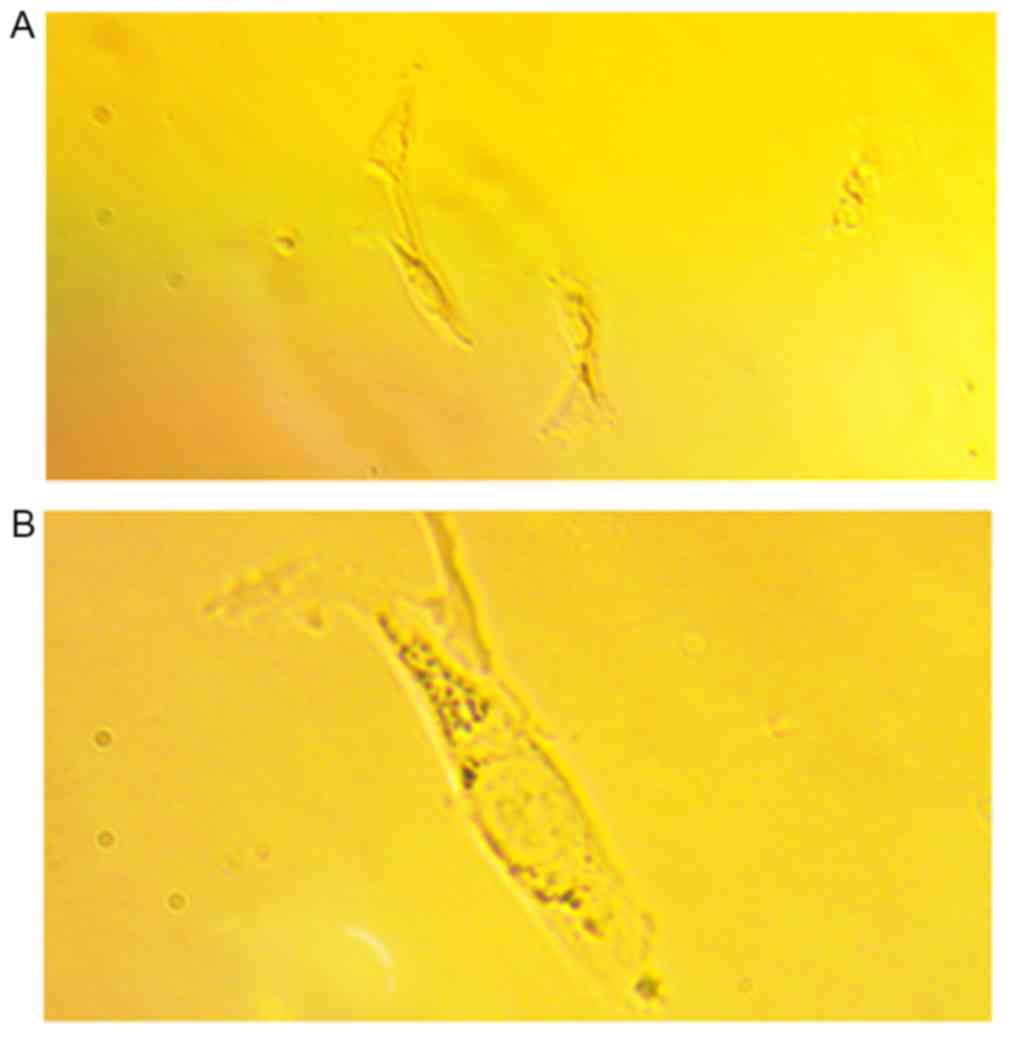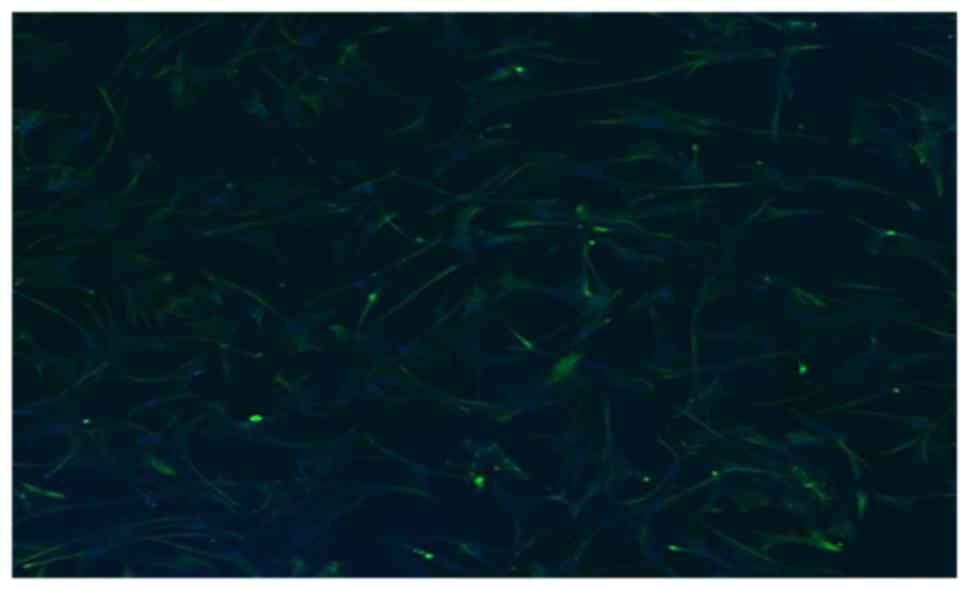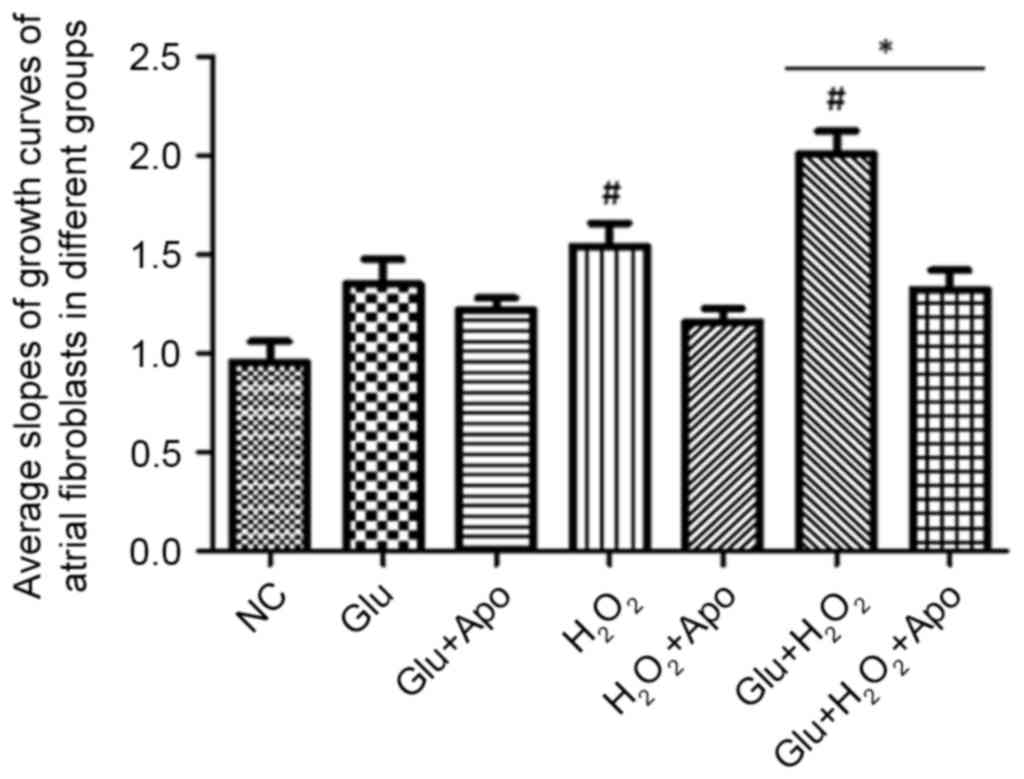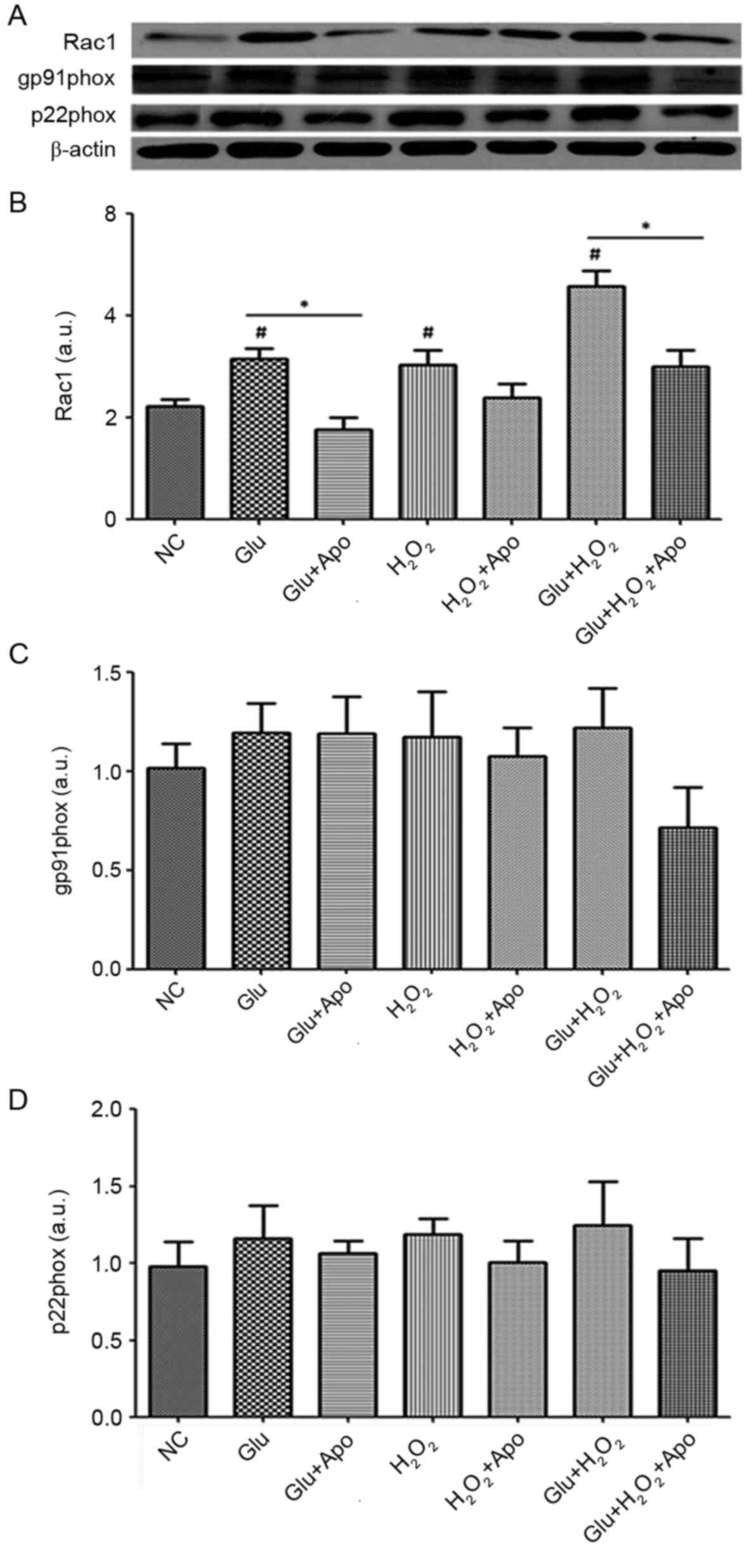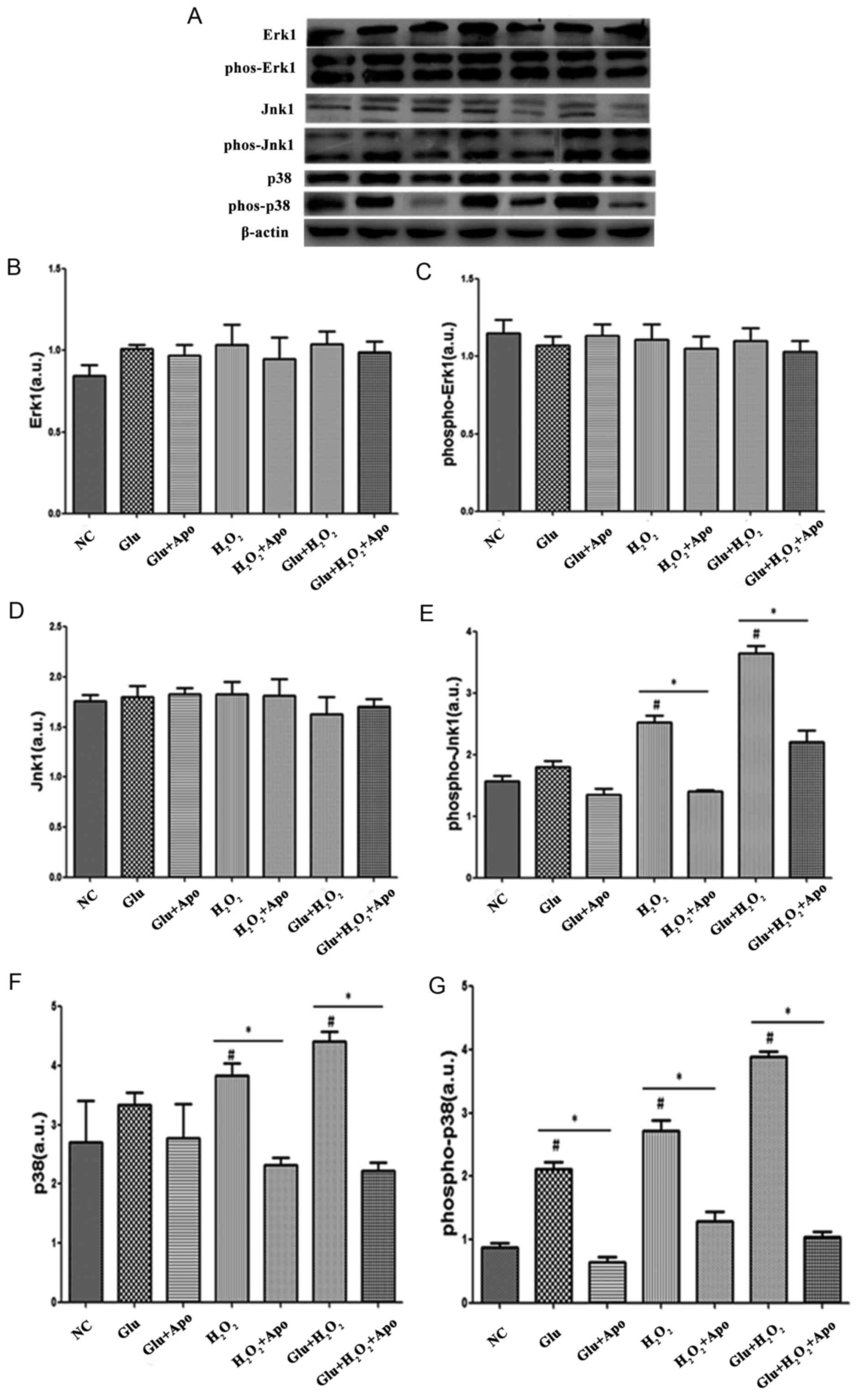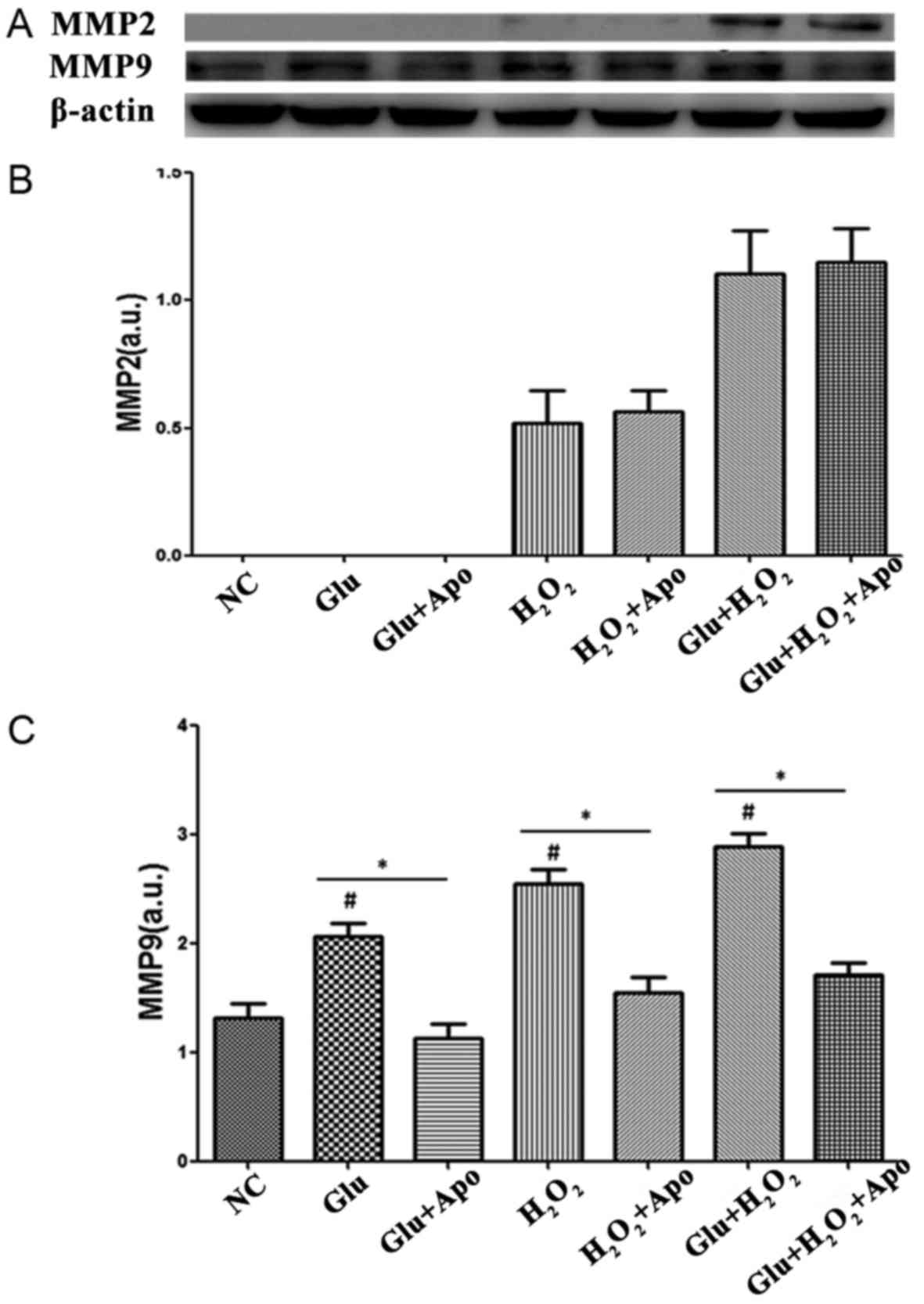|
1
|
Čihák R, Haman L and Heinc P: Summary of
the 2012 focused update of the ESC Guidelines for the management of
atrial fibrillation: Prepared by the Czech Society of Cardiology.
Cor Et Vasa. 54:e341–e351. 2012. View Article : Google Scholar
|
|
2
|
Lip GY and Tse HF: Management of atrial
fibrillation. Lancet. 370:604–618. 2007. View Article : Google Scholar : PubMed/NCBI
|
|
3
|
Wolf PA, Abbott RD and Kannel WB: Atrial
fibrillation as an independent risk factor for stroke: The
Framingham study. Stroke. 22:983–988. 1991. View Article : Google Scholar : PubMed/NCBI
|
|
4
|
Kalus JS, White CM, Caron MF, Coleman CI,
Takata H and Kluger J: Indicators of atrial fibrillation risk in
cardiac surgery patients on prophylactic amiodarone. Ann Thorac
Surg. 77:1288–1292. 2004. View Article : Google Scholar : PubMed/NCBI
|
|
5
|
Fukahara K, Kotoh K, Doi T, Misaki T and
Sumi S: Impact of preoperative atrial fibrillation on the late
outcome of off-pump coronary artery bypass surgery. Eur J
Cardiothorac Surg. 38:366–372. 2010. View Article : Google Scholar : PubMed/NCBI
|
|
6
|
Ad N, Henry L and Hunt S: The impact of
surgical ablation in patients with low ejection fraction, heart
failure, and atrial fibrillation. Eur J Cardiothorac Surg.
40:70–76. 2011. View Article : Google Scholar : PubMed/NCBI
|
|
7
|
Kanagaratnam P, Cherian A, Stanbridge RD,
Glenville B, Severs NJ and Peters NS: Relationship between
connexins and atrial activation during human atrial fibrillation. J
Cardiovasc Electrophysiol. 15:206–216. 2004. View Article : Google Scholar : PubMed/NCBI
|
|
8
|
Patel C, Salahuddin M, Jones A, Patel A,
Yan GX and Kowey PR: Atrial fibrillation: Pharmacological therapy.
Curr Probl Cardiol. 36:87–120. 2011. View Article : Google Scholar : PubMed/NCBI
|
|
9
|
Sanguinetti MC and Bennett PB:
Antiarrhythmic drug target choices and screening. Circ Res.
93:491–499. 2003. View Article : Google Scholar : PubMed/NCBI
|
|
10
|
Dudley SC Jr, Hoch NE, McCann LA,
Honeycutt C, Diamandopoulos L, Fukai T, Harrison DG, Dikalov SI and
Langberg J: Atrial fibrillation increases production of superoxide
by the left atrium and left atrial appendage: Role of the NADPH and
xanthine oxidases. Circulation. 112:1266–1273. 2005. View Article : Google Scholar : PubMed/NCBI
|
|
11
|
Neuman RB, Bloom HL, Shukrullah I, Darrow
LA, Kleinbaum D, Jones DP and Dudley SC Jr: Oxidative stress
markers are associated with persistent atrial fibrillation. Clin
Chem. 53:1652–1657. 2007. View Article : Google Scholar : PubMed/NCBI
|
|
12
|
Chang JP, Chen MC, Liu WH, Yang CH, Chen
CJ, Chen YL, Pan KL, Tsai TH and Chang HW: Atrial myocardial nox2
containing NADPH oxidase activity contribution to oxidative stress
in mitral regurgitation: Potential mechanism for atrial remodeling.
Cardiovasc Pathol. 20:99–106. 2011. View Article : Google Scholar : PubMed/NCBI
|
|
13
|
Kim YM, Guzik TJ, Zhang YH, Zhang MH,
Kattach H, Ratnatunga C, Pillai R, Channon KM and Casadei B: A
myocardial Nox2 containing NAD(P)H oxidase contributes to oxidative
stress in human atrial fibrillation. Circ Res. 97:629–636. 2005.
View Article : Google Scholar : PubMed/NCBI
|
|
14
|
Zhang J, Youn JY, Kim AY, Ramirez RJ, Gao
L, Ngo D, Chen P, Scovotti J, Mahajan A and Cai H: NOX4-Dependent
hydrogen peroxide overproduction in human atrial fibrillation and
HL-1 atrial cells: Relationship to hypertension. Front Physiol.
3:1402012. View Article : Google Scholar : PubMed/NCBI
|
|
15
|
Babusíková E, Kaplán P, Lehotský J,
Jesenák M and Dobrota D: Oxidative modification of rat cardiac
mitochondrial membranes and myofibrils by hydroxyl radicals. Gen
Physiol Biophys. 23:327–335. 2004.PubMed/NCBI
|
|
16
|
Lai LP, Su MJ, Lin JL, Lin FY, Tsai CH,
Chen YS, Huang SK, Tseng YZ and Lien WP: Down-regulation of L-type
calcium channel and sarcoplasmic reticular Ca(2+)-ATPase mRNA in
human atrial fibrillation without significant change in the mRNA of
ryanodine receptor, calsequestrin and phospholamban: An insight
into the mechanism of atrial electrical remodeling. J Am Coll
Cardiol. 33:1231–1237. 1999. View Article : Google Scholar : PubMed/NCBI
|
|
17
|
Li GR and Nattel S: Properties of human
atrial ICa at physiological temperatures and relevance to action
potential. Am J Physiol. 272:H227–H235. 1997.PubMed/NCBI
|
|
18
|
Carnes CA, Chung MK, Nakayama T, Nakayama
H, Baliga RS, Piao S, Kanderian A, Pavia S, Hamlin RL, McCarthy PM,
et al: Ascorbate attenuates atrial pacing-induced peroxynitrite
formation and electrical remodeling and decreases the incidence of
postoperative atrial fibrillation. Circ Res. 89:E32–E38. 2001.
View Article : Google Scholar : PubMed/NCBI
|
|
19
|
Anderson EJ, Kypson AP, Rodriguez E,
Anderson CA, Lehr EJ and Neufer PD: Substrate-specific derangements
in mitochondrial metabolism and redox balance in the atrium of the
type 2 diabetic human heart. J Am Coll Cardiol. 54:1891–1898. 2009.
View Article : Google Scholar : PubMed/NCBI
|
|
20
|
Nichols GA, Reinier K and Chugh SS:
Independent contribution of diabetes to increased prevalence and
incidence of atrial fibrillation. Diabetes Care. 32:1851–1856.
2009. View Article : Google Scholar : PubMed/NCBI
|
|
21
|
Goudis CA, Korantzopoulos P, Ntalas IV,
Kallergis EM, Liu T and Ketikoglou DG: Diabetes mellitus and atrial
fibrillation: Pathophysiological mechanisms and potential upstream
therapies. Int J Cardiol. 184:617–622. 2015. View Article : Google Scholar : PubMed/NCBI
|
|
22
|
van Heerebeek L, Hamdani N, Handoko ML,
Falcao-Pires I, Musters RJ, Kupreishvili K, Ijsselmuiden AJ,
Schalkwijk CG, Bronzwaer JG, Diamant M, et al: Diastolic stiffness
of the failing diabetic heart: Importance of fibrosis, advanced
glycation end products, and myocyte resting tension. Circulation.
117:43–51. 2008. View Article : Google Scholar : PubMed/NCBI
|
|
23
|
Zhang Q, Liu T, Ng CY and Li G: diabetes
mellitus and atrial remodeling: Mechanisms and potential upstream
therapies. Cardiovasc Ther. 32:233–241. 2014. View Article : Google Scholar : PubMed/NCBI
|
|
24
|
Mohammad MR, Hashemzadeh M and Jamal MM:
Diabetes mellitus is a strong, independent risk for atrial
fibrillation and flutter in addition to other cardiovascular
disease. Int J Cardiol. 105:315–318. 2005. View Article : Google Scholar : PubMed/NCBI
|
|
25
|
Korantzopoulos P, Kolettis TM, Galaris D
and Goudevenos JA: The role of oxidative stress in the pathogenesis
and perpetuation of atrial fibrillation. Int J Cardiol.
115:135–143. 2007. View Article : Google Scholar : PubMed/NCBI
|
|
26
|
Liu T, Zhao H, Li J, Korantzopoulos P and
Li G: Rosiglitazone attenuates atrial structural remodeling and
atrial fibrillation promotion in alloxan-induced diabetic rabbits.
Cardiovasc Ther. 32:178–183. 2014. View Article : Google Scholar : PubMed/NCBI
|
|
27
|
Fu H, Li G, Liu C, Li J, Wang X, Cheng L
and Liu T: Probucol prevents atrial remodeling by inhibiting
oxidative stress and TNF-α/NF-κB/TGF-β signal transduction pathway
in alloxan-induced diabetic rabbits. J Cardiovasc Electrophysiol.
26:211–222. 2015. View Article : Google Scholar : PubMed/NCBI
|
|
28
|
Krenning G, Zeisberg EM and Kalluri R: The
origin of fibroblasts and mechanism of cardiac fibrosis. J Cell
Physiol. 225:631–637. 2010. View Article : Google Scholar : PubMed/NCBI
|
|
29
|
Ieda M, Fu JD, Delgado-Olguin P, Vedantham
V, Hayashi Y, Bruneau BG and Srivastava D: Direct reprogramming of
fibroblasts into functional cardiomyocytes by defined factors.
Cell. 142:375–386. 2010. View Article : Google Scholar : PubMed/NCBI
|
|
30
|
Shiraishi I, Takamatsu T, Minamikawa T,
Onouchi Z and Fujita S: Quantitative histological analysis of the
human sinoatrial node during growth and aging. Circulation.
85:2176–2184. 1992. View Article : Google Scholar : PubMed/NCBI
|
|
31
|
Shiraishi I, Takamatsu T, Minamikawa T and
Fujita S: 3-D observation of actin filaments during cardiac
myofibrinogenesis in chick embryo using a confocal laser scanning
microscope. Anat Embryol (Berl). 185:401–408. 1992. View Article : Google Scholar : PubMed/NCBI
|
|
32
|
Burstein B and Nattel S: Atrial fibrosis:
Mechanisms and clinical relevance in atrial fibrillation. J Am Coll
Cardiol. 51:802–809. 2008. View Article : Google Scholar : PubMed/NCBI
|
|
33
|
Sayed AA, Khalifa M and Abd el-Latif FF:
Fenugreek attenuation of diabetic nephropathy in alloxan-diabetic
rats: Attenuation of diabetic nephropathy in rats. J Physiol
Biochem. 68:263–269. 2012. View Article : Google Scholar : PubMed/NCBI
|
|
34
|
Aljofan M and Ding H: High glucose
increases expression of cyclooxygenase-2, increases oxidative
stress and decreases the generation of nitric oxide in mouse
microvessel endothelial cells. J Cell Physiol. 222:669–675.
2010.PubMed/NCBI
|
|
35
|
Li JM, Gall NP, Grieve DJ, Chen M and Shah
AM: Activation of NADPH oxidase during progression of cardiac
hypertrophy to failure. Hypertension. 40:477–484. 2002. View Article : Google Scholar : PubMed/NCBI
|
|
36
|
Griendling KK, Sorescu D and Ushio-Fukai
M: NAD(P)H oxidase: Role in cardiovascular biology and disease.
Circ Res. 86:494–501. 2000. View Article : Google Scholar : PubMed/NCBI
|
|
37
|
Qiu J, Zhao J, Li J, Liang X, Yang Y,
Zhang Z, Zhang X, Fu H, Korantzopoulos P, Liu T and Li G: NADPH
oxidase inhibitor apocynin prevents atrial remodeling in
alloxan-induced diabetic rabbits. Int J Cardiol. 221:812–819. 2016.
View Article : Google Scholar : PubMed/NCBI
|
|
38
|
Zhang L, Zalewski A, Liu Y, Mazurek T,
Cowan S, Martin JL, Hofmann SM, Vlassara H and Shi Y:
Diabetes-induced oxidative stress and low-grade inflammation in
porcine coronary arteries. Circulation. 108:472–478. 2003.
View Article : Google Scholar : PubMed/NCBI
|
|
39
|
Clerk A, Fuller SJ, Michael A and Sugden
PH: Stimulation of ‘stress-regulated’ mitogen-activated protein
kinases (stress-activated protein kinases/c-Jun N-terminal kinases
and p38-mitogen-activated protein kinases) in perfused rat hearts
by oxidative and other stresses. J Biol Chem. 273:7228–7234. 1998.
View Article : Google Scholar : PubMed/NCBI
|
|
40
|
Nakano Y, Niida S, Dote K, Takenaka S,
Hirao H, Miura F, Ishida M, Shingu T, Sueda T, Yoshizumi M and
Chayama K: Matrix metalloproteinase-9 contributes to human atrial
remodeling during atrial fibrillation. J Am Coll Cardiol.
43:818–825. 2004. View Article : Google Scholar : PubMed/NCBI
|















